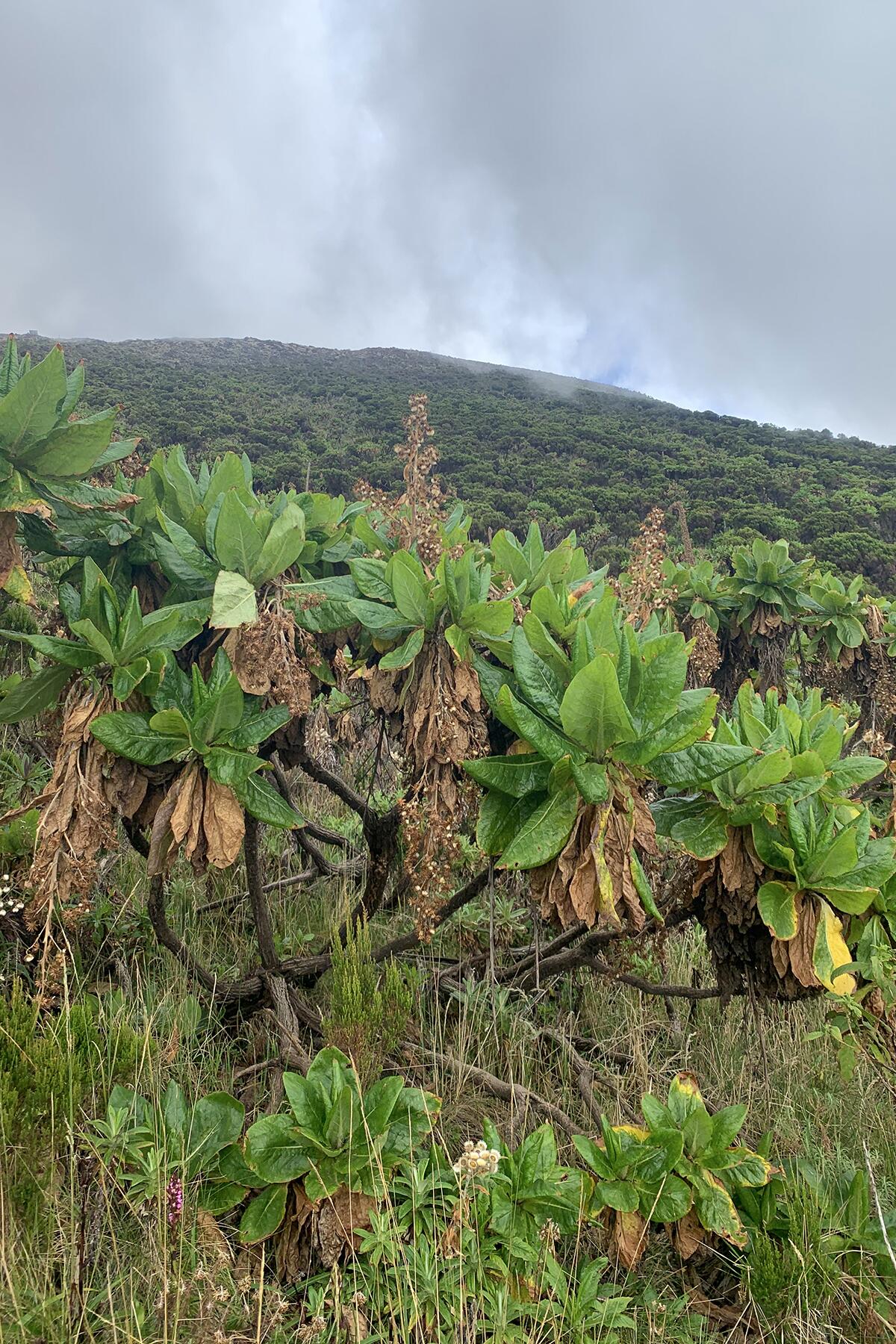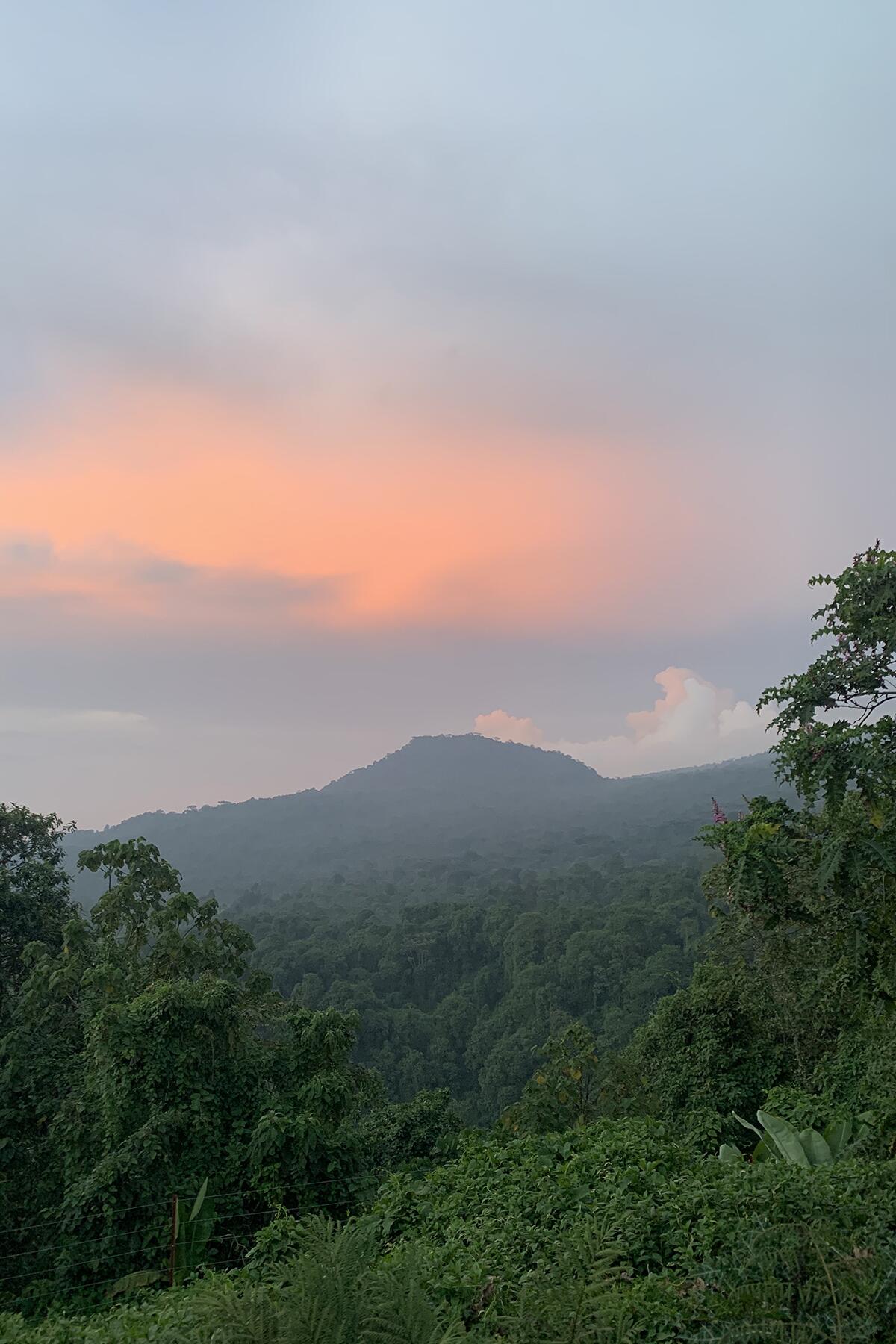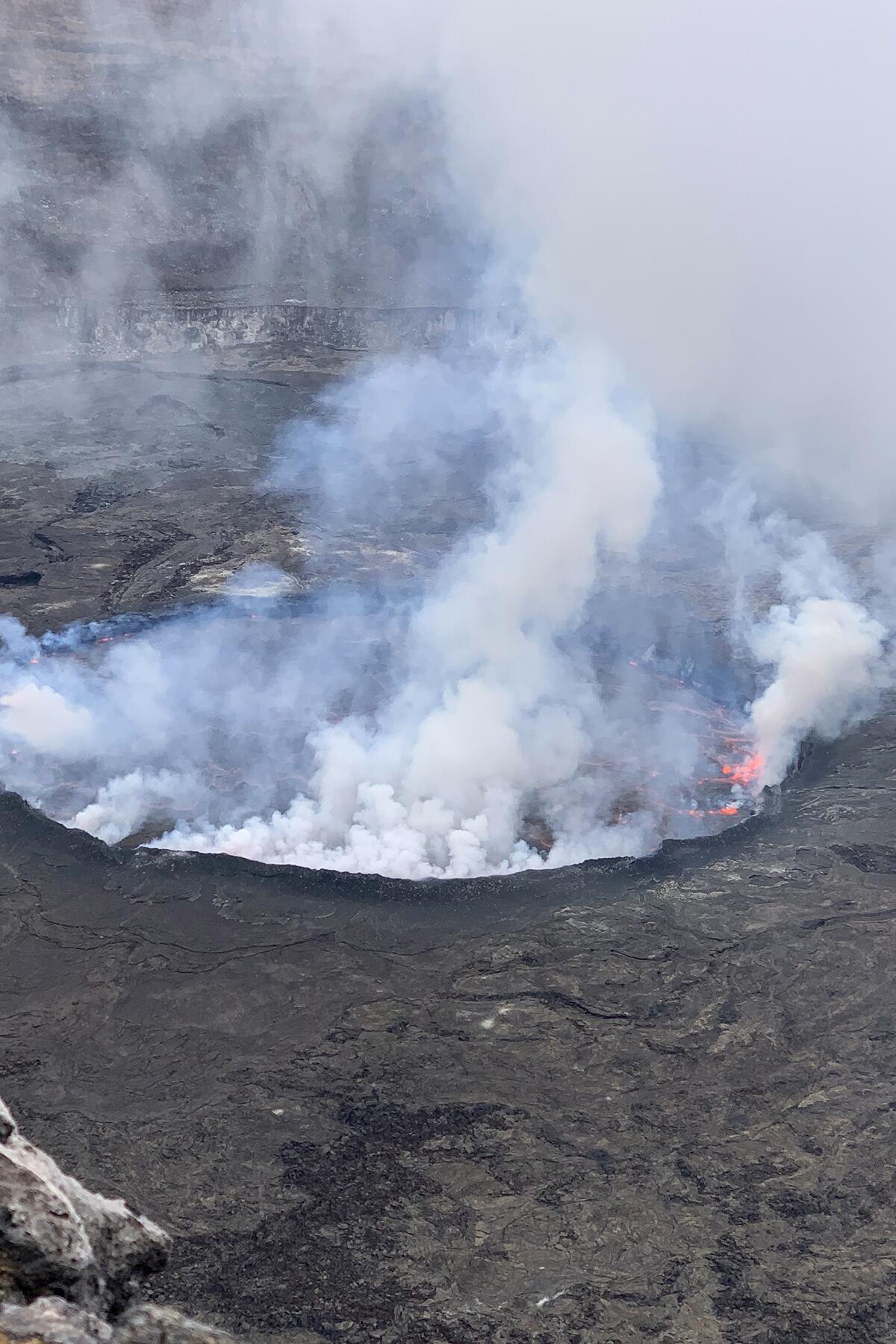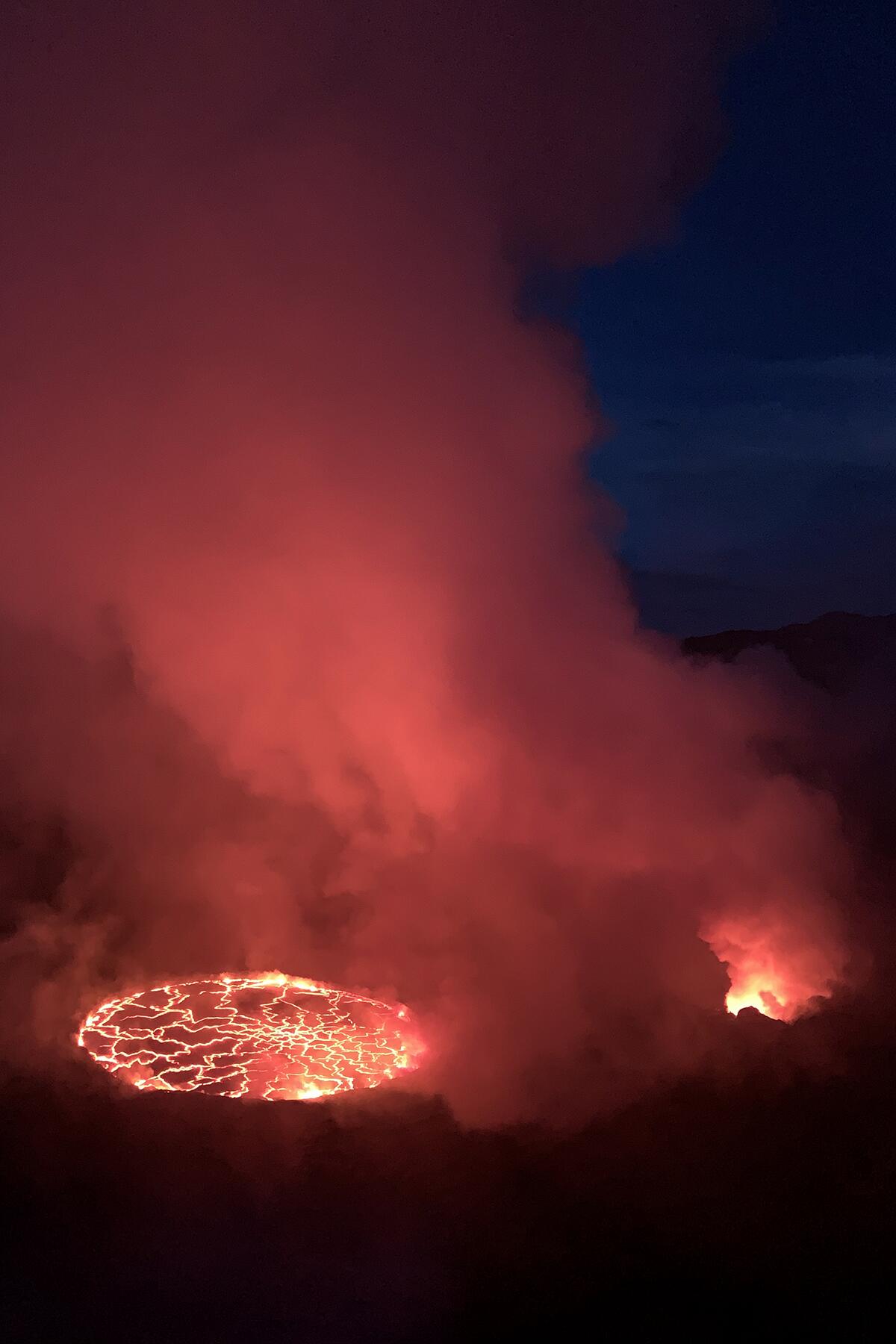Within the challenge of something dangerous, something unexplored, and something new, we are able to be reminded that we are strong, we are capable, and we are better than whatever has held us back.
In the summer of 2019, I fell 10 feet out of the sky and smashed my head against the hard sand dunes of Brooklyn’s Plumb Beach. The infamous kite-surfing beach abuts the highly trafficked Belt Parkway and my kite surfing error resulted in two choices: risk being run over or release the kite. Choosing release saved me the severity of crushed bones but left me with a traumatic brain injury and a doctor-imposed quarantine-esque exile months before the rest of the world was locked down. The cure for the brain injury was rest–socially distanced with minimal stimuli. Yet, isolated rest brought its own trauma, and as I recovered I thirsted for anything that could make me feel alive, which is how I found myself in March of 2020 hiking up a volcano in the Democratic Republic of the Congo with a dozen rangers, two strangers, and the knowledge that most of the volcanic monitoring equipment had been stolen by the rebel armies.
Mt. Nyiragongo, one of four active lava lakes in the world, is not easy to get to. Both routes there require arduous travel from the United States and flights into either the DRC or Rwanda, a mix of vaccinations, and, per a sternly worded page on the State Department website, a prepared will before visiting. After landing in Kigali, one must coordinate a taxi to the border for an early check-in before a military escort through bullet-ridden Goma–stopping once to check for illegal weapons and once for Ebola. After so many months of hobbit-like existence, these hurdles acted as lures.
Recommended Fodor’s Video
Yet, as I jumped out of the open-topped military convoy, clad in my hiking boots, along with Robert and Igor–two solo travelers who were also scheduled for the hike–and nearly a dozen soldiers carrying machine guns, I wondered if the hike was truly the next step in my recovery. The night prior, over dinner in a rustic but elegant lodge run by the government where we had walked with gorillas and overnighted in safari tents, I learned that most of the equipment that was used to monitor the activity of the volcano had been stolen by rebel armies who were camped at the next door mountain, that the soldiers accompanying us were there to prevent armed attacks, and that the two mountains were responsible for 40% of Africa’s volcanic eruptions. Since the 1980s, Nyiragongo has erupted 35 times. In no uncertain terms, it is one of the most dangerous volcanic mountains in the world. If the lava doesn’t get you, something else might.
We drove to the top, fear mixed with excitement. We hiked across five types of terrain. Crossing the most recent eruption site where, in 2002, the lava raced to Goma: 250 people died, a quarter of the city was destroyed, and hundreds of thousands fled. Still we had further to go until we reached the rocky boulders and finally, the steep, tree-less lava fields. Our small group climbed the hike faster than any group before us at just under four hours and found ourselves at the summit of the mountain looking into a boring caldera of smoke.
“Is this it?” asked Igor, his disappointment obvious. The nearby chef smiled, shook his head, and went back to chopping onions.
As the sun set, the volcano shook off its smoky veil and molton red lines etched their way across the bowl. The temperature plummeted and I sat for long stretches silently with two awed companions listening to the sound of destruction and rebirth. The lava shelves heaved against the wall of the volcano, crumbled, sunk, and melted. New shelves crashed again. Ruptures opened across the entire surface. And the massive raw power of the earth resulted in a visual and auditory cascade of fireworks.
As I sat there, the world rebuilt itself.
The chef who had climbed with us prepared the sort of feast one rarely eats while hiking: soup, a main course, and dessert. And, the chance to sleep in one of twelve huts on the rim of the volcano made for a truly luxurious experience–one that rivaled safaris despite the more physical work. In this instance, the elaborate dinner felt earned. Still, we ate quickly, yearning to get back to the cusp of the volcano. Each break to eat, to use the bathroom, or to fetch another layer was just a distraction from the rawest act of power any of us had ever experienced.
“I’ve done Erta-Ale,” said Igor. “This is so much better.”
His affection was contagious and the three of us went to sleep only because our tired, aching bodies could no longer hold up our heads. But, I awoke nearly every hour, pulling on my hiking boots and escaping the cabin. It was hard to sleep when hundreds of thousands of tons of molten lava were creating a symphonic soundtrack to one’s dreams. I dreamt of Middle Earth (predictable) but I daydreamed of possibility. Watching a mountain rebuild itself with material dredged from the very core of the Earth felt like proof that nearly anything is possible.
Around 5 a.m., as I sat on the edge of a volcano with a steaming cup of tea in my glove-clad hands, I had a realization: Sometimes the path to recovery is not exactly what the doctor ordered. With heavy eyes, I looked at the raw power of the world around me and smiled as Robert walked out of the fog to sit on my ledge. With sleepy eyes and tousled hair, he too had been drawn again to the power of the mountain.

“Feeling okay?” he asked me. I smiled as I scooted over to make room for him on the lone bench. For the first time in a long time, I answered with excitement.
“Honestly, I’ve never been better.”
And, it was true. For the first time since my brain swelled and I was unable to be touched by a human without crying, I felt like myself: a raw, powerful figure who had the capacity to rebuild again and again and again.
Sometimes, travel is the cure we all need to shake off the long arms of isolation and rid ourselves of the drudgery of our existence. Within the challenge of something dangerous, something unexplored, and something new, we are able to be reminded that we are strong, we are capable, and we are better than whatever has held us back.











Keep going > 'Do it all'. .. The world can wait for you to settle down..